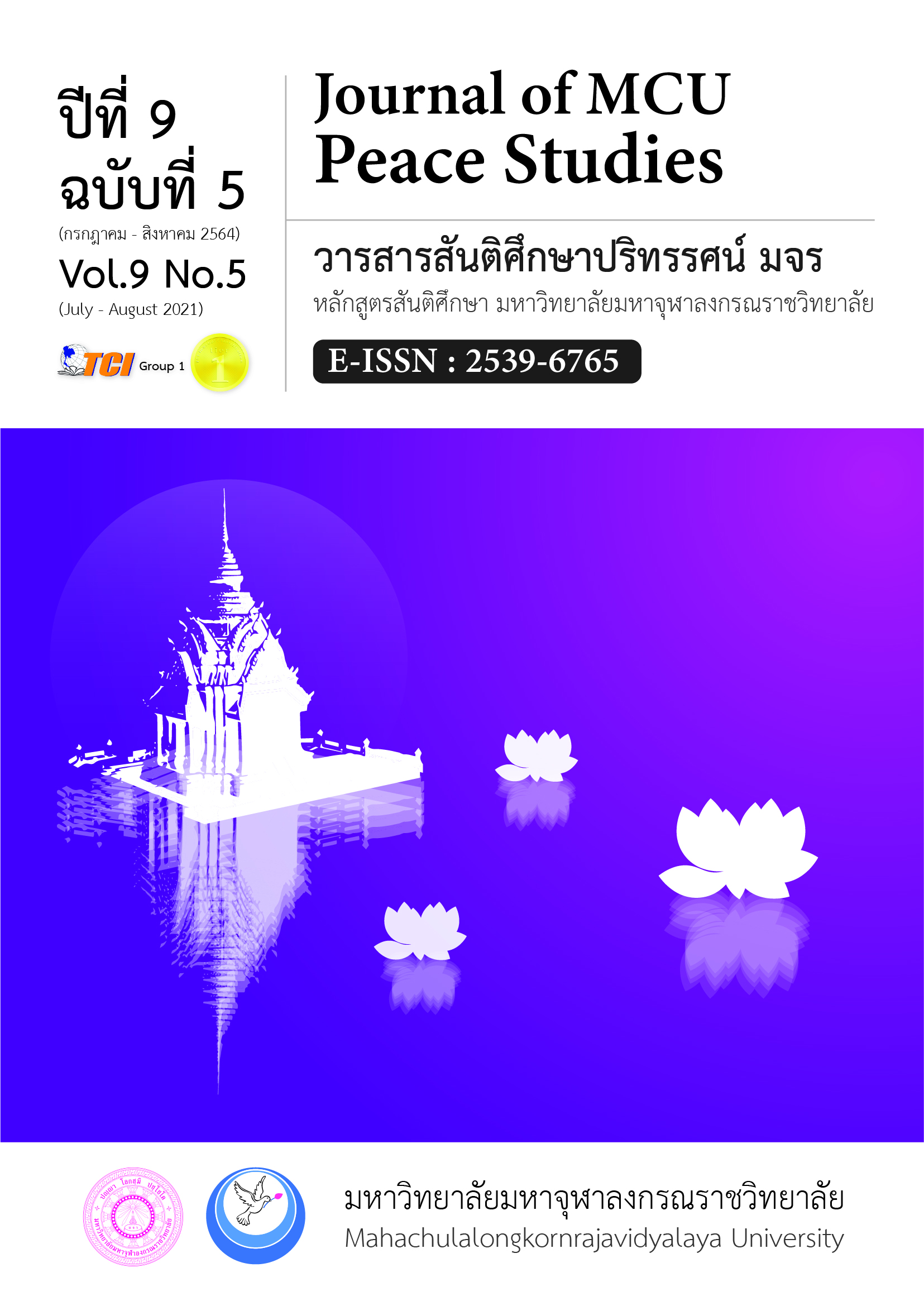การศึกษาปัญหาและแนวทางการกำหนดกลยุทธ์ของนักทัศนมาตรของประเทศไทย
Main Article Content
บทคัดย่อ
บทความวิจัยนี้มีวัตถุประสงค์ 1) เพื่อวิเคราะห์จุดแข็งจุดอ่อนและสถานการณ์ในสภาวะปัจจุบันของนักทัศนมาตรในประเทศไทย 2) เพื่อศึกษาแนวทางในการกำหนดกลยุทธ์ของนักทัศนมาตรของประเทศไทย วิธีดำเนินการวิจัยโดยการวิเคราะห์จุดแข็ง จุดอ่อน โอกาสและอุปสรรคและนำเทคนิค TOWS Matrix มาใช้ในการสร้างกลยุทธ์เกี่ยวกับความต้องการนักทัศนมาตรของประเทศไทย กลุ่มตัวอย่างที่ใช้ในการวิจัย คือ ผู้เชี่ยวชาญจำนวนทั้งสิ้น 13 คน การเก็บรวบรวมข้อมูลโดยการสัมภาษณ์แบบกลุ่ม ผู้วิจัยเลือกผู้สัมภาษณ์แบบเจาะจง วิเคราะห์ข้อมูล ปัจจัยภายในใช้เทคนิค 7S และการวิเคราะห์ปัจจัยภายนอกใช้เทคนิค PEST Analysis ผลการวิจัยพบว่า 1) การวิเคราะห์จุดแข็ง จุดอ่อนและสถานการณ์ในสภาวะปัจจุบันของนักทัศนมาตรในประเทศไทย ได้แก่ 1.1) จุดแข็ง มีความเชี่ยวชาญด้านการวัดสายตาด้วยอุปกรณ์ทางทัศนมาตร 1.2) จุดอ่อน ไม่สามารถรักษาโรคทางตาโดยการผ่าตัด หรือจ่ายยาได้ 1.3) โอกาส เป็นบุคลากรที่มีความต้องการของตลาดแรงงานสูง และ 1.4) อุปสรรค ไม่สามารถรักษาโรคทางตาได้อย่างครอบคลุมทุกโรค 2) สำหรับแนวทางการกำหนดกลยุทธ์ของนักทัศนมาตร 2.1) กลยุทธ์เชิงรุก ควรทำการโฆษณาสาขาอาชีพ นักทัศนมาตรในแหล่งธุรกิจต่างๆ พร้อมกับแสดงบทบาทความสามารถในการแนะนำผู้ที่มีปัญหา ทางด้านสายตา การผลิตเลนส์ หรือเลนส์สัมผัสที่มีคุณภาพ 2.2) กลยุทธ์เชิงแก้ไข ทำการแทรกตนเองเข้าไปประกอบอาชีพในธุรกิจที่มีความเกี่ยวข้องแล้วใช้ความรู้ความสามารถในวิชาชีพ ในการสร้างผลิตภัณฑ์ที่เกี่ยวข้องกับดวงตาและการบริการที่มีความแตกต่าง 2.3) กลยุทธ์เชิงป้องกัน ใช้ความสามารถทางวิชาชีพในการแก้ไขความผิดปกติทางด้านสายตาด้วยแว่นและคอนแทคเลนส์ด้วยต้นทุนที่ต่ำ และใช้ความสามารถในการแนะนำอุปกรณ์ และ 2.4) กลยุทธ์เชิงรับ เครื่องมือที่ใช้ในวิชาชีพ และค่าใช้จ่ายในการศึกษาที่มีราคาสูงจึงทำให้มีบุคลากรในวิชาชีพมีน้อยไม่เพียงพอต่อความต้องการ
Article Details
ทัศนะและความคิดเห็นที่ปรากฏในบทความในวารสาร ถือเป็นความรับผิดชอบของผู้เขียนบทความนั้น และไม่ถือเป็นทัศนะและความรับผิดชอบของกองบรรณาธิการ ยินยอมว่าบทความเป็นลิขสิทธิ์ของวารสาร
เอกสารอ้างอิง
Anuradha, N. (2015). Personal protective equipments In Santanam PP (ed.) Occupational Optometry, 1st edn. Chennai: pnElite School of Optometry, unit of Medical Research Foundation.
Cartwright, V.A., & McGhee, Charles N.J. (2017). Ophthalmology and vision science research. Part 1: understanding and using journal impact factors and citation indices. Journal of Cataract & Refractive Surgery, 31(10), 1999-2007.
Department of Medical Services. (2016). Standard for determining medical staff positions. Bangkok: Office of Medical Strategy.
Komoldit, K. (2018). Prospects of the production of graduates at the graduate level of King Mongkut's Institute of Technology Ladkrabang in the next decade (2017 - 2026). (Doctoral Dissertation). King Mongkut's Institute of Technology Ladkrabang. Bangkok.
Krasnairawiwong, T. (2019). Lawmakers raise the level of professions to solve the problems of sight, strike the frame, find a point of view, "Optometrist - glasses shop worker. Non-ophthalmologist. PPTV Online. Retrieved May 17, 2020, from https://www.pptvhd36.com/.
Naresuan University. (2020). Bachelor of Optics Program Updated curriculum 2019. Phitsanulok: Department of Optometry Faculty of Allied Health Sciences Naresuan University.
Pisut, S., & Umpai, K. (2020). Optometry Profession Practice Control. Rajapark Journal, 14(34), 203-218.
Ploychomphasuraphan, P. (2018). Visitor: Personnel missing in the Thai eye care system. Chiang Mai Medical Journal, 14(2), 47-59.
Rangsit University. (2019). Bachelor of Optics Program Interview with Dr. Watanee Yenjit, Dean of Ajarn Prasert Phadoong Kiatsakun Deputy Dean for Academic Affairs and Dr. Christopher Rugaber, Assistant Dean for Foreign Affairs Faculty of Optometry. Pathumtani: Rangsit University.
Rangsit University. (2020) Faculty of Optometry Rangsit University. Retrieved May 10, 2020, from https://www.optometry-rsu.com/.
Ramkhamhaeng University. (2012). Bachelor of Optics course documents (New course 2002). Bangkok: Faculty of Science and the Institute of Health Sciences Ramkhamhaeng University.


